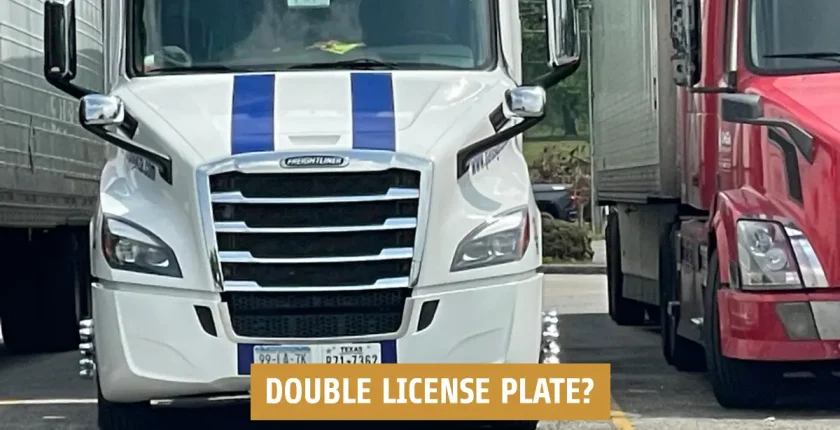Cabotage and Cross-Border Operations for Mexican Trucks in the US?
Within the framework of the USMCA (United States-Mexico-Canada Agreement), the vast network of highways across the US relies heavily on a constant flow of goods, and Mexican trucking companies play a role in this vital transportation system. However, their ability to operate within the US is subject to specific regulations designed to protect domestic trucking jobs and ensure safety.
This article explores the conditions under which Mexican truck drivers, employed by Mexican companies, can operate in the US. We’ll delve into the concept of cabotage, explore permit requirements, and discuss the ongoing debate surrounding cross-border trucking.
Cabotage Definition
Cabotage refers to the transport of goods or passengers between two places within the same country by a foreign company or individual. In simpler terms, it’s when a non-domestic company tries to operate shipping, air travel, or other transportation services within a country.
The primary obstacle for Mexican trucks operating entirely within the US is a concept called cabotage. Cabotage laws restrict the transportation of goods between two US points by foreign-registered vehicles and drivers. This regulation aims to protect American trucking jobs and ensure a level playing field for domestic companies.
Cross-Border Exceptions: Delivering Across the Line
There are exceptions to cabotage restrictions that allow Mexican trucking companies to participate in cross-border transportation:
- International Loads: Mexican trucks can haul goods originating in Mexico and destined for final delivery points within the US. Similarly, they can pick up US exports for delivery in Mexico.
- Commercial Zones: Designated commercial zones along the US-Mexico border allow some leeway. Mexican trucks with proper permits can perform deliveries and pickups within these zones, even if both origin and destination are in the US. However, they cannot travel beyond the commercial zone for domestic deliveries.
The Pilot Program: A Stepping Stone?
In 2011, a pilot program was established to explore the possibility of allowing Mexican trucks greater access to the US interior. The program granted a limited number of Mexican carriers provisional operating authority to operate beyond commercial zones. However, the program faced opposition from US trucking companies concerned about safety and job security, and it wasn’t renewed after its initial three-year period.
Mexican trucks and Lower Transportation Costs
The issue of cross-border trucking remains a point of contention. Proponents of increased access for Mexican trucks argue that it would improve efficiency and lower transportation costs. Opponents maintain concerns about safety standards, potential job displacement, and unfair competition.
The future of Mexican truck operations in the US hinges on finding a balance between these competing interests. Potential solutions include:
- Harmonization of Safety Regulations: Ensuring equivalent safety standards for both US and Mexican trucks could address safety concerns.
- Phased Approach: A gradual increase in access for Mexican trucks, coupled with monitoring of impacts, could ease tensions.
- Focus on Technology: Utilizing technology like electronic logging devices and improved border processing can enhance safety and expedite crossings.
Economic Impact on US Trucking Indusrty
While Mexican trucking companies currently face restrictions on operating entirely within the US, they play a vital role in cross-border freight movement. As the debate surrounding cabotage continues, finding a solution that fosters economic growth while prioritizing safety will be crucial for a smooth-functioning North American trade corridor.
Double License Plates?
US Plates for Cross-Border Operations (Not Typical): In rare cases, a Mexican trucking company participating in a specific cross-border program might have a temporary US registration plate on their truck alongside the Mexican plate. This would only be necessary if the program allows them to operate beyond designated commercial zones within the US.
My trucks have both Mexico and U.S. license plates. Can I put my MX Number and my MC Number on the same truck?
Mexican Company
FMCSA Answer: No marking requirement exists for display of either the MX number of the Mexico-domiciled carrier or the MC number of the U.S. carrier. The vehicle must be marked in accordance with 49 CFR 390.21(a) that requires the legal name or a single trade name of the motor carrier operating the self-propelled CMV, and the identification number issued by FMCSA to the motor carrier preceded by the letters “USDOT.”
For the Mexico-domiciled motor carrier, the USDOT identification number must be followed by either the distinctive “Z” denoting commercial zone operations or the “X” denoting operations beyond the commercial zone, depending on the type of authority the company has received.
If the name of any person other than the operating carrier appears on the CMV, the name of the operating carrier must be followed by the legal name or a single trade name of the motor carrier operating the self-propelled CMV, the identification number issued by FMCSA to the motor carrier preceded by the letters “USDOT” and be preceded by the words “operated by.”
